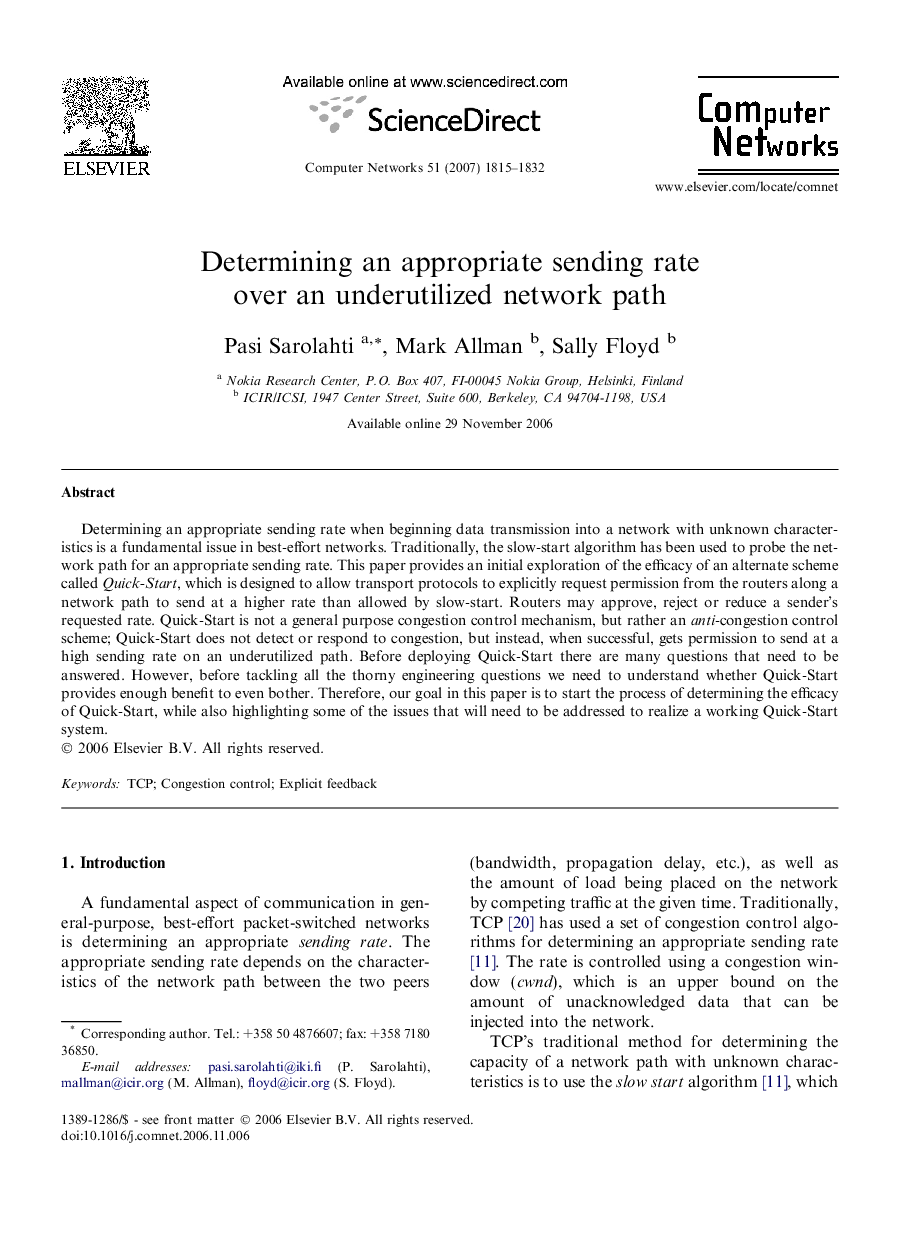| کد مقاله | کد نشریه | سال انتشار | مقاله انگلیسی | نسخه تمام متن |
|---|---|---|---|---|
| 451546 | 694321 | 2007 | 18 صفحه PDF | دانلود رایگان |

Determining an appropriate sending rate when beginning data transmission into a network with unknown characteristics is a fundamental issue in best-effort networks. Traditionally, the slow-start algorithm has been used to probe the network path for an appropriate sending rate. This paper provides an initial exploration of the efficacy of an alternate scheme called Quick-Start, which is designed to allow transport protocols to explicitly request permission from the routers along a network path to send at a higher rate than allowed by slow-start. Routers may approve, reject or reduce a sender’s requested rate. Quick-Start is not a general purpose congestion control mechanism, but rather an anti-congestion control scheme; Quick-Start does not detect or respond to congestion, but instead, when successful, gets permission to send at a high sending rate on an underutilized path. Before deploying Quick-Start there are many questions that need to be answered. However, before tackling all the thorny engineering questions we need to understand whether Quick-Start provides enough benefit to even bother. Therefore, our goal in this paper is to start the process of determining the efficacy of Quick-Start, while also highlighting some of the issues that will need to be addressed to realize a working Quick-Start system.
Journal: Computer Networks - Volume 51, Issue 7, 16 May 2007, Pages 1815–1832